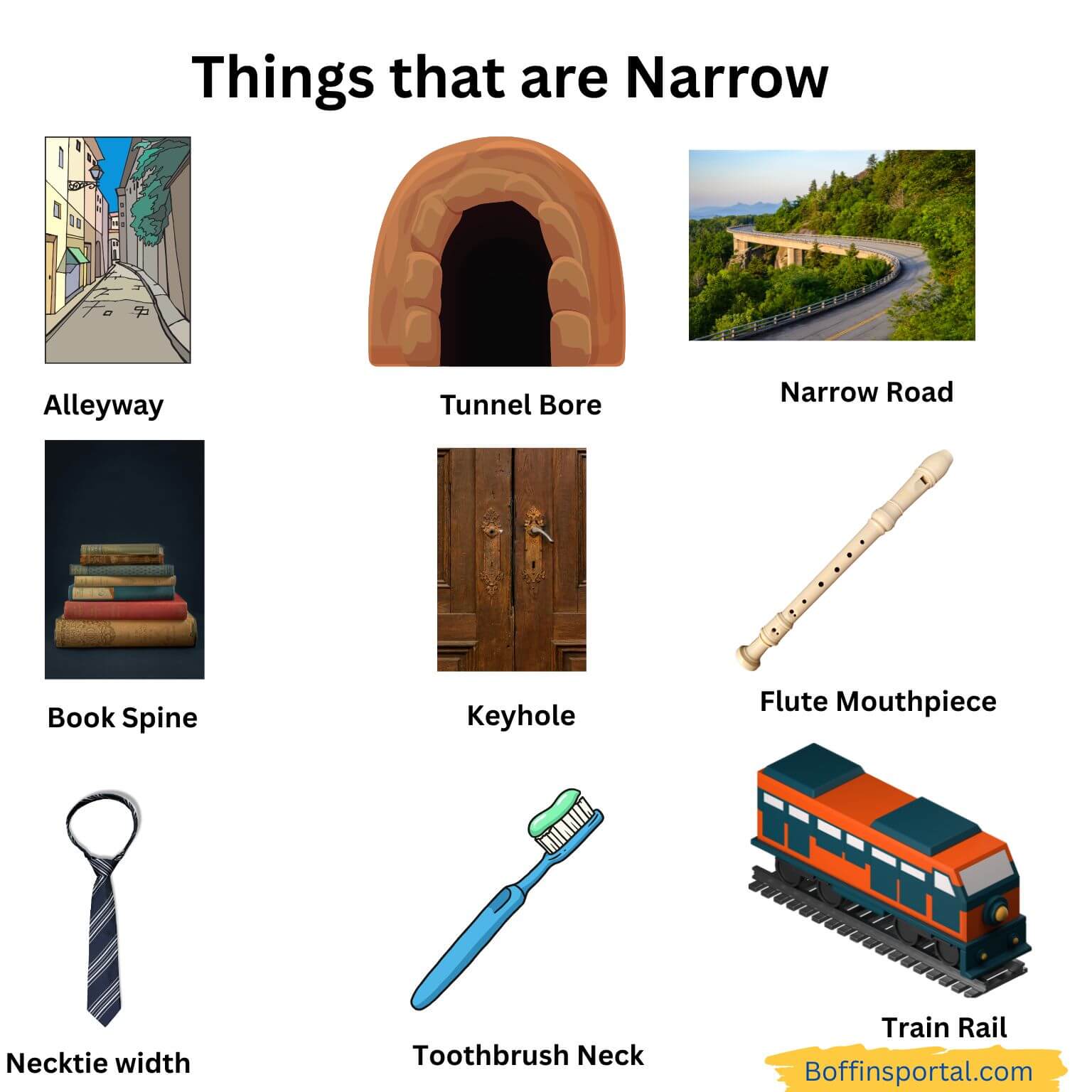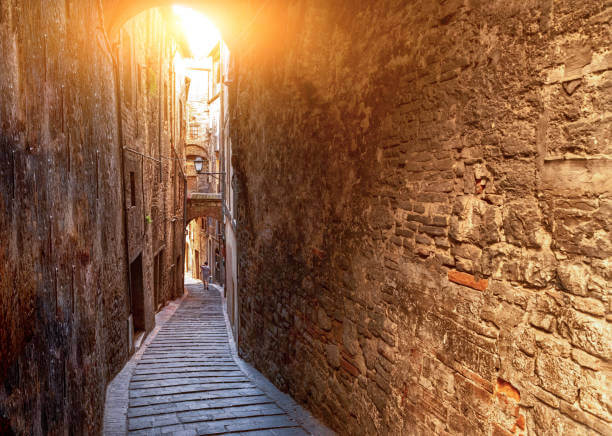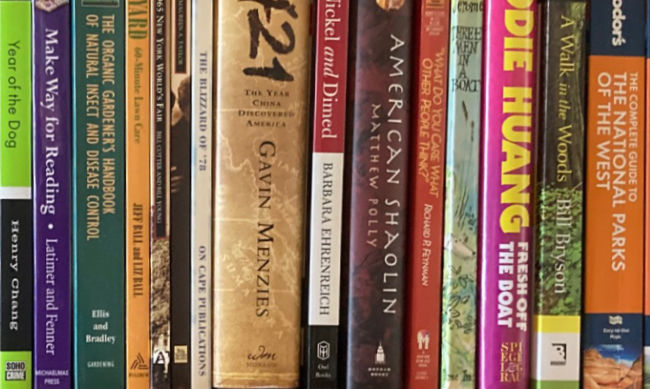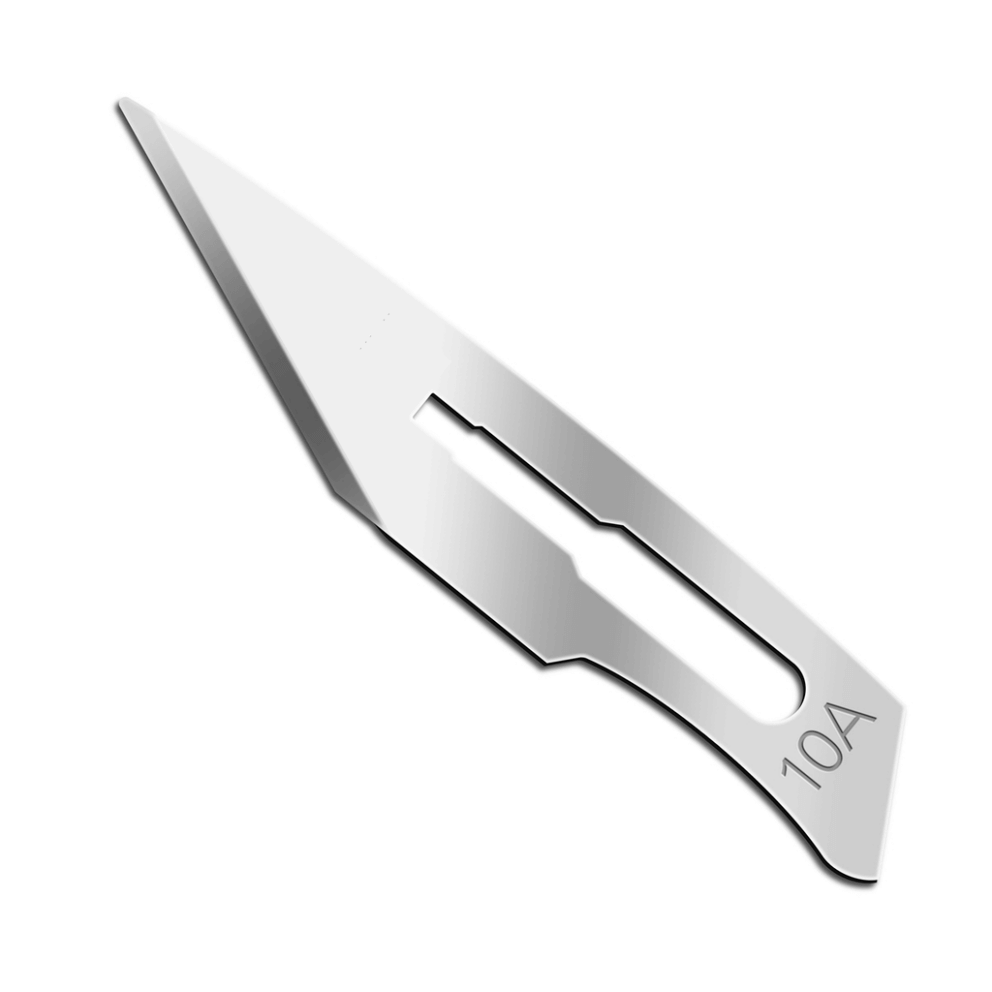
Not everything takes up lots of space or stretches far and wide. Some things are slim, tightly shaped, or made to fit between small gaps. They don’t spread out — they slip through, squeeze in, or fit neatly where others can’t. These are the narrow things in our world — designed to be sleek, functional, and often built for precision or movement through tight spaces.
In this list, we’ll explore real examples of things that are considered narrow — objects limited in width, shaped to guide flow, or built to pass through narrow spaces.
If you’ve ever wondered, “What are some things that are truly narrow?” — you’re in the right place. This list brings you clear, relatable, and interesting examples to help you understand what narrow really means.
50+ Examples of Things that are Narrow

1. Alleyway – A passage between buildings with limited width.
2. Subway Turnstile – Only wide enough for one person to pass.
3. Ladder Rung – Narrow foot space across the step.
4. Single-Lane Road – Limited side-to-side space for just one vehicle.
5. Hallway in Old Houses – Slim in width, tight to pass.
6. Tunnel Bore (like in a cave) – Confined space, narrow from wall to wall.
7. Mountain Ridge Path – Extremely narrow path with steep drops.
8. Zipper Teeth – Narrow strip running along fabric edges.
9. Credit Card Slot – Very limited width, just enough for a card.
10. Keyhole – Small width, only wide enough for a key.
11. Paperclip – A narrow loop of metal that grips paper tightly.
12. Book Spine – Especially on thin books, the spine is narrow in width.

13. Flute Mouthpiece – A narrow opening that channels air for sound.
14. Telescope Tube – Long with a small diameter—narrow for focusing light.
16. Tie (Necktie) – Designed to be long and narrow across the chest.
17. Mail Slot – Just wide enough for letters—clearly a narrow space.
18. Chisel Tip – Shaped narrowly for precise, linear carving.
19. Wind Tunnel Testing Slot – Intentionally narrow to control airflow.
20. Door Frame Gap – A spatially narrow slot between door and frame.
21. Window Blind Slats – Thin and narrow pieces that tilt for light control.
22. Sewing Pin – A narrow metal rod used in fabric work.
23. Slide Rail (Drawer Track) – Narrow strip guiding drawers in confined space.
24. Balance Beam – A long but very narrow surface for gymnastics.
25. Barbed Wire Strand – Narrow wire stretched for fencing boundaries.
26. Shoe Horn – Curved and designed with a narrow width to slide into shoes.
27. Laser Beam – A focused stream of light with an extremely narrow path.
28. Wind Chime Tube – Long, cylindrical tubes with limited width.
29. Scalpel Blade – Narrow, precise edge used in surgery.

30. Eyedropper Tube – A slender and narrow tube to deliver small liquid drops.
31. Fishing Line – Extremely narrow string designed to be nearly invisible.
32. Guitar Pick Edge – The actual striking edge is narrow and sharp.
33. Engraving Tool Tip – Narrow, sharp point for detailed etching.
34. Bird Feather Shaft – The central spine is narrow and supports the feather.
35. Elevator Gap – Small and narrow space between elevator and floor.
36. Train Rail – Narrow tracks that guide wheels precisely in a set path.
37. Recorder Mouthpiece – Slim and narrow to guide airflow accurately.
39. Snorkel Tube – Cylindrical but clearly narrow, meant for mouth-sized airflow.
40. Hummingbird Beak – Long and narrow, ideal for sipping nectar.
41. Bugle Mouthpiece – Narrow end used to blow air into the instrument.

42. Toothbrush Neck – Narrow shaft connecting handle to bristles.
43. Chopstick Rest – A small, narrow stand to keep chopsticks clean.
44. Drinking Fountain Spout – A slim metal pipe releasing a small water arc.
45. Razor Blade Slot – The narrow channel where the blade edge is exposed.
46. Dry Erase Marker Tip – A narrow point for precise writing on whiteboards.
47. Oil Dipstick – A narrow rod used to measure oil levels in engines.
48. Garden Hose Nozzle Opening – The small tip that controls water spray.
49. X-Acto Knife Blade – Super sharp and narrow for precision cutting.
50. Bullet Casing Neck – Narrowed part that holds the bullet.
51. Fishing Rod Eyelet – Tiny ring guiding the fishing line.
52. Battery Compartment Spring – Small, narrow coil that maintains contact.
53. Fencing Foil Blade – Long, narrow weapon for precise thrusts.
54. Wind Turbine Blade Tip – Narrowed end for high-speed slicing of air.
Narrow vs. Thin
There is a difference between “thin” and “narrow,” even though they are often used interchangeably in casual conversation.
The word “thin” refers to something with very little thickness, usually from front to back or top to bottom. It describes the overall slenderness or flatness of an object. For example, a thin sheet of paper or a thin slice of tomato has very little depth. It can also describe people or animals with small or delicate builds.
On the other hand, “narrow” refers to something with very little width, especially when compared to its length. It typically describes the side-to-side dimension and is often used when talking about spaces, pathways, or objects that offer limited room. For instance, a narrow hallway or a narrow street suggests limited space from one side to the other.
Although these terms can overlap—like in the case of a knife blade, which is both thin in thickness and narrow in width—they emphasize different dimensions. “Thin” focuses on how thick or deep something is, while “narrow” focuses on how wide something is across. Understanding this distinction can help describe objects and spaces more accurately, especially when discussing measurements, shapes, or design.
